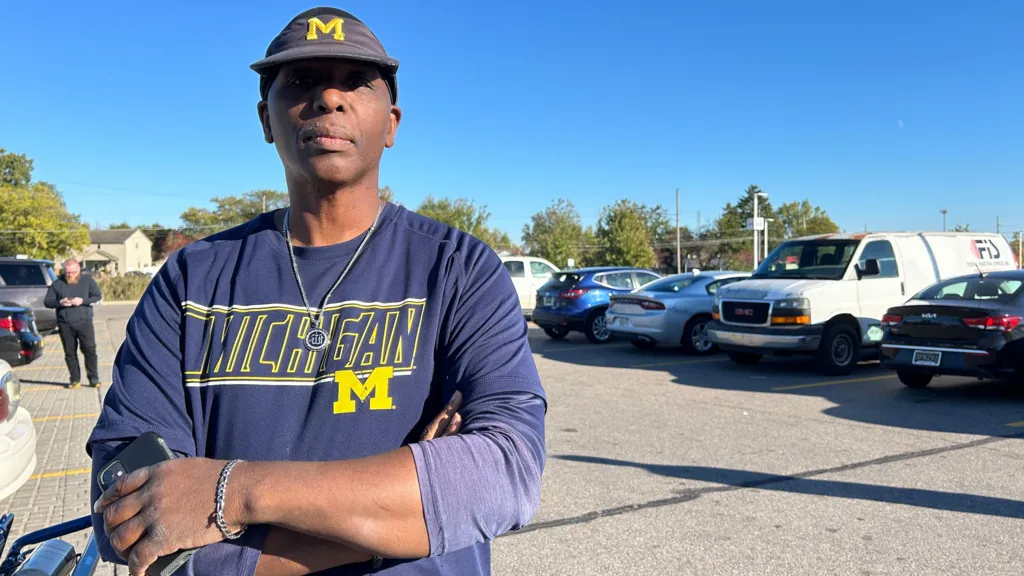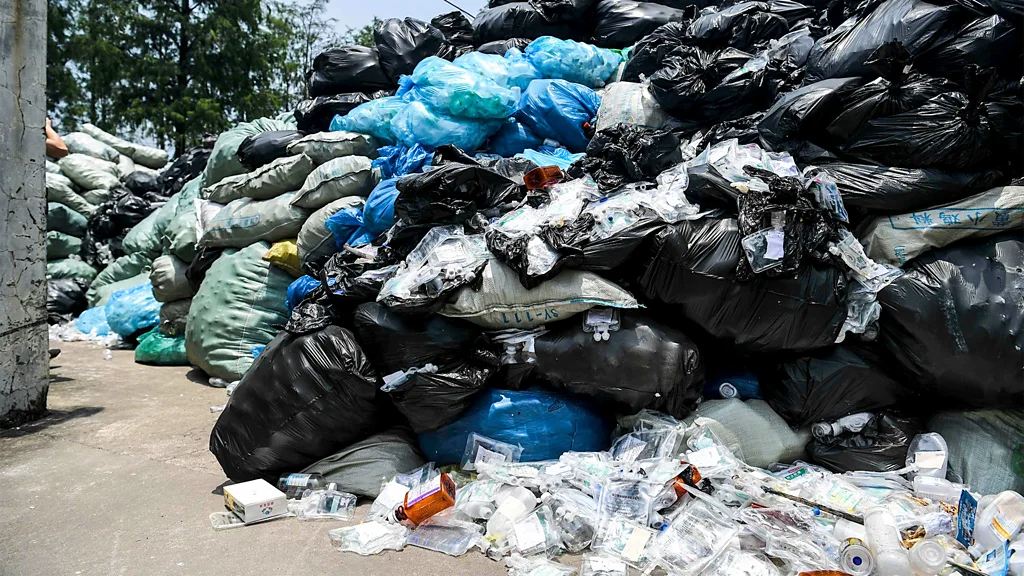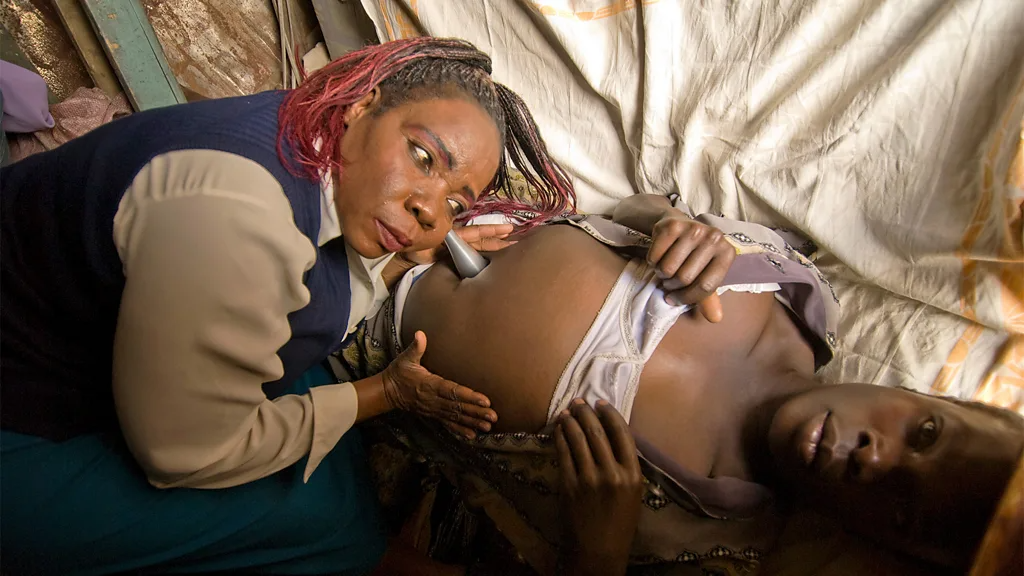Harris started ‘like a rocket’ in Michigan. Now she’s slipping
Marcie Paul is nervous.
A Democratic activist, Ms Paul has been knocking on hundreds of strangers’ doors, making phone calls and sending out flyers, all in an effort to woo people here to vote for Kamala Harris.
When Harris replaced President Joe Biden as the Democratic candidate in July, Ms Paul was hopeful, as she saw the vice-president go “off like a rocket” in Michigan.
The state is one of three “blue wall” states – along with Pennsylvania and Wisconsin – that went Democrat in 2020, and if won again, would help clinch a presidential victory for Harris.
But with less than a month to go before election day, Harris’s honeymoon period in Michigan could be ending, leaving her pathway to victory less certain. A Quinnipiac poll last week indicated Donald Trump is leading in the swing state by three points.
“To keep that pace for the whole race – even though it’s seriously abbreviated – would be really unrealistic for anyone,” said Ms Paul, a resident of West Bloomfield, Michigan and co-founder of the liberal advocacy group Fems for Dems. “But I thought that we’d be a little more comfortable.”
Ms Paul is among several Democratic organisers and lawmakers in Michigan who say the presidential race here is tighter than expected, even as the Harris campaign appears to be heeding lessons from 2016. Critics say then-Democratic presidential
Up north, immigration and economy take centre stage
Although the state is far from the southern border, Democratic organisers keep hearing that immigration is a top concern for Michigan voters.
“I don’t understand why,” said Ms Paul, the Fems for Dems leader. “It’s just really not relevant for us.”
But the issue has resonated with many of the voters the BBC spoke to, including Mary Beierschmitt of Novi, Michigan.
“It’s a big issue,” she said, adding that she thought Harris had not handled the situation well as vice-president, when Harris was tasked with finding solutions to tackle the source of migration.
Illegal border crossing reached a record high last year. After the Biden administration enacted asylum restrictions, they fell to their lowest in four years.
Trump has made attacks on Harris’s immigration record a central part of his campaign. His focus has not just been at the southern border, but in midwestern states as well, including Michigan’s neighbour Ohio, where the former president has falsely claimed Haitian immigrants are settling illegally in the town of Springfield and eating residents’ pets.
Voters tend to blame the party in power for their frustrations with national issues like the economy and immigration, even if the Biden administration isn’t solely responsible for the border crisis and the rising cost of living, said Jonathon Hanson, a lecturer at University of Michigan’s Ford School of Public Policy.
“The downside for Harris and Biden is, although they’ve done a lot of things to help the economy recover from a major downturn, it’s a more difficult story to tell politically,” he said.
Trump also may have the upper hand among some swing voters in Michigan because he is more well known than Harris after four years in office and years in the public eye, said Mr Hanson.
Tim and Janet of Novi, Michigan, say they know Trump’s personality well – and they don’t like it. But the independent voters already cast their ballots for Trump because they believe he is better at articulating his policies than Harris.
“I can’t vote for somebody just because it’s a feel-good time,” said Tim, a 75-year-old who declined to share his last name for privacy reasons. “They need to be doing things and have policy initiatives that are going to be beneficial.”
But in the Detroit suburb of Warren, Harris’s new economic policies are swaying independent voter Darrell Sumpter.
The vice-president has laid out a number of economic proposals during her campaign, including a plan to offer first-time home buyers an average of $25,000, and an expansion of the child tax credit.
“I’ve never been able to even afford a house. I’ve been waiting for years,” said Mr Sumpter, 52, who voted for Trump in 2020 and is leaning toward Harris this year.
“I don’t want the country to regress right back to the same state it was with Trump,” he added.

The placentas fuelling hospital kitchens in Nepal
The burning of medical waste poses a serious health and environmental danger. Hospitals in Nepal have started turning this hazardous waste into cooking gas.
Hospital staff close to the incinerator complained of persistent coughs, breathing difficulties, headaches, sore eyes and rashes. The black, noxious smoke that poured out of its chimney wafted in through the windows of Tribhuvan University Teaching Hospital (TUTH) in Nepal’s capital Kathmandu. Staff reluctantly closed them to protect their vulnerable patients: children and babies in paediatric and neonatal intensive care, and adults with respiratory illnesses.
“Keeping the windows shut caused the rooms to overheat and added to the discomfort,” recalls Deepak Mahara, former TUTH executive director who has now retired. “When the incinerator was operational, smoke frequently drifted into these sensitive areas, causing significant distress. The foul smell made the work environment uncomfortable.”
Despite this, no one realised their symptoms were connected to the incinerator’s emissions until 2014, when a local non-profit, the Health Environment and Climate Action Foundation (HECAF360), approached hospital managers to suggest replacing the offensive furnace with an underground biodigester. Staff not only faced long-term health conditions if they continued to be exposed to the poisoned air, but the hospital was also causing broader public health and environmental dangers, HECAF360 warned. Low-quality incineration of health care waste releases dioxins and furans into the atmosphere – chemicals both classified as human carcinogens. While medical waste that is dumped outside of hospital grounds poses risks to anyone who may come into contact with it, such as waste pickers on dump sites.
“We were unaware of the negative impact of the mismanagement of healthcare waste,” says Mahara. Realising the issue was serious, he agreed to take action. “It needed to be addressed immediately to comply with hospital’s mission to ‘do no harm’,” he says.

The situation at TUTH is common. Hospitals worldwide use incinerators to eradicate rubbish. It is the method most commonly used in developing countries to dispose of infectious waste, according to a UN Human Rights Council report. The report highlights that if medical facilities have small-scale incinerators, or manage them incorrectly, this can lead to dioxins emissions that are 40,000 times higher than emission limits set forth in the Stockholm Convention on Persistent Organic Pollutants.
In Nepal, hospitals and healthcare centres generate between 1 and 1.7kg (2.2 and 3.7lb) of healthcare waste per bed each day, according to Health Care Without Harm (HCWH), a global non-profit working to reduce healthcare services’ negative impacts on the environment and people. One study estimates low-income countries produce up to 6kg (13.3lb) of hazardous waste per bed per day, which rises to 11kg (24.3lb) in high-income nations.
The safe approach to medical waste management is to separate and treat wastes differently. According to the World Health Organization (WHO), 15% of healthcare waste is hazardous material that may be infectious, toxic or radioactive. Waste must all be segregated before disposal, but just one-third of healthcare facilities do this. This has a detrimental impact on people and the planet. About 5.2 million people, including four million children, die each year from waste-related diseases around the world.
Pre-eclampsia: The deadly mystery scientists can’t solve
The condition causes more than 70,000 maternal deaths every year – but its causes continue to elude scientists.
After a glittering track and field career which saw her rack up seven Olympic gold medals and 14 world championship golds, Allyson Felix assumed that pregnancy would be as smooth as her trademark running style.
“All my life, I’ve taken care of my body, my body has been my tool, and it has never really failed me,” says Felix. “I’ve trained and I’ve put demands on my body, and it’s always performed. [So] I was thinking [of having] like a beautiful natural birth, I’d gone to hypnobirthing, and all these things,” she says.
But when Felix attended a routine check-up at 32 weeks, she was shocked to be told that she had severe pre-eclampsia, a pregnancy complication that causes dangerously high blood pressure levels and organ damage, and that she required immediate hospitalisation. The following day, doctors performed an emergency C-section, and her daughter Camryn was born two months early, subsequently spending the first month of her life in the neonatal intensive care unit.
Until then, there had been few signs that anything was amiss for Felix and her unborn baby, other than some swelling in her feet. “I wasn’t too alarmed by that, but I found out I was spilling protein and all these things about my blood pressure. It was terrifying. But our family got to go home,” she says.
While Camryn is now a healthy five year old, Felix is all too keenly aware of similar stories which have resulted in a far more tragic ending. In April 2023, her long-time team-mate Tori Bowie, a former world 100m champion and relay gold medallist at the Rio 2016 Olympics, died in childbirth from complications linked to pre-eclampsia. She was just 32.
“We were on numerous relay teams together, we competed against each other, with each other, and that was extremely shocking,” says Felix. “Someone that I’ve spent so much time with, it was really devastating.”
Unravelling a deadly enigma
Worldwide, pre-eclampsia is thought to be responsible for more than 70,000 maternal deaths and 500,000 foetal deaths every year, with many fatalities resulting from stroke or prolonged fitting as a result of the elevated blood pressure. It can occur without warning at any time during pregnancy, with some women developing early-onset pre-eclampsia before 34 weeks, and others experiencing late-onset forms of the condition. Women can even suffer from postpartum pre-eclampsia in the six weeks after giving birth.

Scientists have uncovered a few clues as to why this happens. Excessive inflammation, beginning in the uterus, disrupts the delicate communication patterns taking place between the mother’s body and the foetus. In particular, it impacts the reshaping of blood vessels within the uterus to form the placenta, the organ created to provide the foetus with the nutrients and oxygen it needs.
Because the flow of blood through the placenta is abnormal, it ultimately interferes with how the mother’s body controls blood pressure, gradually leading to hypertension and ultimately pre-eclampsia.
“When a woman becomes pregnant, her heart’s got to pump extra for the baby and the placenta,” says Ian Wilkinson, clinical pharmacologist and professor of therapeutics at the University of Cambridge, who is leading a UK-based population study of pre-eclampsia called Poppy. “The amount of blood she’s pumping each minute goes up one-and-a-half to two times [in normal pregnancy].”
Women with existing autoimmune disorders, those aged over 40 and women with a larger body mass index are known to be at greater risk, perhaps because they are unable to adapt as well to the physical toll that pregnancy places on a woman’s body.
But there are still many mysteries about why certain women develop pre-eclampsia, often without warning, and why others do not. In particular, rates are as much as 60% higher in black women, who are also more likely to experience severe forms of the condition.
Some researchers believe that the latter could be linked to poorer access to good nutrition and health insurance. “There’s structural racism, where certain patients and communities don’t have the same access to early interventions, detection screening, primarily because of where they get their healthcare,” says Garima Sharma, director of cardio-obstetrics and cardiovascular women’s health at the healthcare company Inova Health System in Fairfax, Virginia.
At the same time, Sharma says that this does not explain exactly why the condition begins in the first place. While doctors still rely heavily on clinical risk factors such as age, ethnicity and medical history to assess who might develop pre-eclampsia, the accuracy of predictions based on these factors is notoriously poor. “The sensitivity of clinical risk factors on their own is low,” says Sharma.
But with newer and improved diagnostics beginning to emerge, scientists may soon be able to shed more light on who is at risk and why.
Predicting pre-eclampsia
While specialists treating other diseases such as cancer or chronic infections can often take a biopsy of a patient’s internal tissues for further analysis, there is no easy way of studying the changes taking place in a pregnant woman’s uterus.
“We can’t just routinely go in and collect a sample of placenta [from a pregnant woman], because that can really increase the risk of miscarriage,” says Lana McClements, associate professor at the University of Technology Sydney. “And animals actually don’t develop pre-eclampsia, so rodent models, for example, are very difficult to create.”